#Himalayan Brown Bear
Explore tagged Tumblr posts
Text



Our askbox is OPEN!
Just a group of people trying to make a difference.
[Welcome folks to my new DunMeshi AU askblog! I’m Velvetwyrms, a Scientific Illustrator and Zoologist, here to raise awareness for and show you the amazing organisms we share our world with, through the eyes of our favourite characters!] [Please do not repost, reblogging stops my hours of work from dying in your likes, lets others enjoy this too and spreads the word of this project! <3]
#dungeon meshi#delicious in dungeon#dunmeshi#dunmeshi biosci au#laios touden#farcille#falin touden#marcille donato#chilchuck tims#senshi#dungeon meshi fanart#dunmeshi fanart#dunmeshi askblog#dungeon meshi askblog#animal intros#goldbug#himalayan brown bear
3K notes
·
View notes
Text


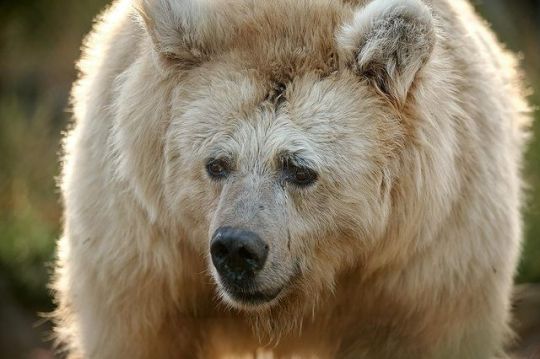
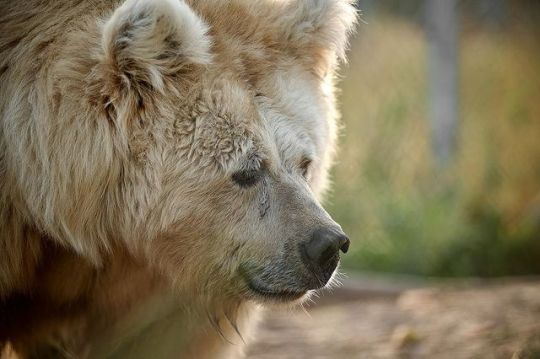

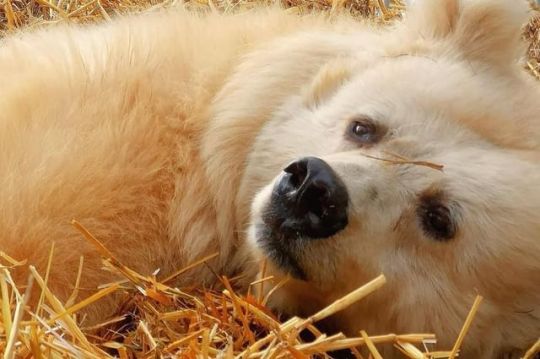
Chada appreciation post
54 notes
·
View notes
Text

MEET SEBASTIAN THE BURLY BROWN BEAR
[Photo (C) Wildlife SOS/ Akash Dolas]



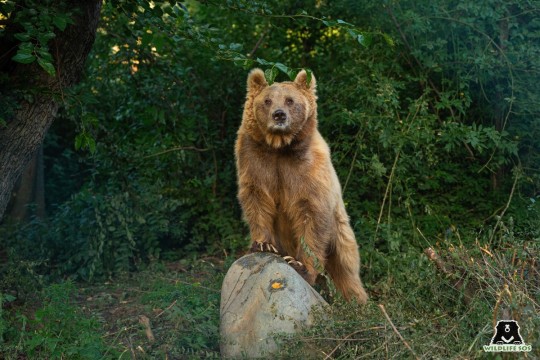
37 notes
·
View notes
Text

Himalayan Brown Bear
📸 by @mandennophotography
3 notes
·
View notes
Text

Tonight's thing: a smol acrylic-on-canvas-panel painting of Chada, the internet's favorite rumpled old bear lady, for a witchy friend's altar. The halo was kind of a spur-of-the-moment decision (and also traced from a jar lid lol), but I stand by it. I'm not terribly witchy myself, but I kinda get my friend's vibes about it, and bears are even more important to her than they are to me. We both love Chada deeply.
I'll probably add some text on the back identifying her (as if she needs it) and calling her something like "the patron saint of better tomorrows". Chada had an absolutely horrible life before she was brought to the White Rock sanctuary near Kyiv, where she will (we all hope) live out the rest of her days in peace and plenty. With everything going on right now, I think most of us could use a better tomorrow. I know I could.
2 notes
·
View notes
Text
🏞️ Unforgettable Landscapes of Deosai National Park
Deosai National Park, known as the “Land of Giants,” offers breathtaking landscapes that captivate the hearts of travelers. This vast high-altitude plateau is renowned for its sprawling plains, crystal-clear lakes, and towering mountain peaks. Whether you’re an adventure seeker or a nature lover, Deosai promises an unforgettable experience with its pristine beauty and serenity. The park is home…
#Astore to Deosai#best time to visit Deosai#best trekking spots in Pakistan#camping in Deosai#Deosai 4x4 journey#Deosai adventures#Deosai family trip#Deosai Himalayan brown bear#Deosai marmots#Deosai mountain views#Deosai National Park#Deosai National Park Pakistan#Deosai national park tour#Deosai outdoor adventures#Deosai photography spots#Deosai plains#Deosai plateau#Deosai road access#Deosai scenery#Deosai starry nights#Deosai travel guide#Deosai trekking#Deosai wildlife#Deosai wildlife photography#explore Deosai National Park#explore Gilgit-Baltistan#high-altitude plateau Pakistan#Himalayan Brown Bear#Land of Giants#nature tourism Pakistan
0 notes
Text
Bears in Birkenfeld Zoo



Formosan Black Bears


Grizzly Bears


Himalayan Brown Bear
1 note
·
View note
Text
A Himalayan Brown Bear Cub trapped in a tin canister is rescued by the Indian Army
A Himalayan Brown Bear Cub trapped in a tin canister is rescued by the Indian Army @neosciencehub #IndianArmy #Viralvideo #Xplatform #neosciencehub
Recently, a Himalayan Brown Bear cub was saved by the Indian army when its head became lodged in a tin canister. The soldiers gently and carefully released the frightened cub, making sure it was unharmed, in a video that is currently going viral. The footage illustrates the challenging operating circumstances the soldiers faced, even if the precise site of the rescue has not been made public.…
0 notes
Text
Theriotype List
So, to start out, for context, I think we've all seen a skeptic comment about how all therians are only "cool" animals. I personally have always enjoyed keeping up with those with "rarer" theriotypes and even using them as examples when these kinds of arguments are brought up, so I've decided to do a little bit of a personal project, that being creating a huge list of the wide variety within the therian community. Below is the list I've created so far, sorted by general species, then adding in subspecies/breeds, all in alphabetical order.
Please keep in mind and understand that for now, I am only putting Earthen animals on this list, mainly so I and the post can keep up, because there's a LOT here already and I know there are hundreds more out there. Maybe in the future I'll make another list with mythical/fictional/etc. kintypes, or someone else can do that for me, you have my full permission, just let me know, but for now, just Earthen animals.
This list does, of course, need more entries though. If you have a theriotype that you don't see on this list, please comment or reblog and let me know so I can add it! You can follow and find it with the tag "foxskys theriotype list".
Adder - European Agouti Alligator - American Alpaca Ankylosaurus Anteater Argentavis Armadillo - Three-banded Arthropleura Axolotl Badger - American - European - Honey - Japanese - Sunda Stink Bat - Evening - Flying Fox - Vampire Bear - Black - Brown - Polar Bee - Bumble - Honey Beetle - Dor - Stag Binturong Bison - American Bonobo Butterfly - Buckeye Caracal Cat, Domestic - Bombay - Himalayan - Japanese Bobtail - Lykoi - Maine Coon - Norwegian Forest - Oriental - Ragdoll - Shorthair - Turkish Van Centipede - Amazonian Giant - House - Japanese Giant - Red-headed Cheetah Chickadee Chimpanzee Chipmunk - Eastern Cicada - White Ghost Coatimundi - White-nosed Cockroach Coot - European Cow - Holstein Friesian Coyote Coywolf Crocodile - Nile - Saltwater - Siamese Crow - American - Hooded Cryodrakon Damselfly - Blue-tailed Deer - Axis - Caribou - Hog - Marsh - Red - White-tailed Deinonychus Dilophosaurus Dingo Dog, Domestic - Alaskan Malamute - Australian Shepherd - Beagle - Belgian Malinois - Bernese Mountain - Blue Bay Shepherd - Border Collie - Borzoi - Carpathian Shepherd - Cavalier King Charles Spaniel - Dalmatian - Doberman - German Shepherd - Golden Retriever - Husky - Irish Wolfhound - Karst Shepherd - Nova Scotia Duck-tolling Retriever - Saluki - Samoyed - Sighthound - Silken Windhound - Wolfdog - Yorkie Dolphin - Amazon River - Common Donkey Dove Duck - Mallard Eagle - Bald - Golden Elk - American - Irish Eusmlius Fish - Arowana - Barbel - Betta - Bristlenose Pleco - Carp - Hag - Koi - Pike - Salmon - Zander Fly - Blue Bottle - House Fossa Fox - Arctic - Bat-eared - Blanford's - Corsac - Crab-eating - Gray - Red, American - Red, European - Swift Gecko - Day Goat Golden Cat - Asiatic Goose - Canada Gorilla Grackle Grebe - Pied-billed Guinea Pig Hamster Hare - Brown - European Hawk - Red-tailed Hawk-Eagle - Changeable - Wallace's Hedgehog Homotherium Hornbill Hornet - Bald-faced - European Horse - Akhal-Teke - Clydesdale - Drum - Mustang Hyena - Aardwolf - Brown - Spotted - Striped Ichthyovenator Iguana Isopod Jackal - Black-Backed Jaguar Jay - Blue - Florida Scrub Jellyfish - Moon - White Spotted Jerboa Kangaroo Kaprosuchus Katydid Kestrel - Eurasian Ladybug Lemur - Black-and-white Ruffed - Red-bellied - Red-ruffed Leopard - African - Clouded - Snow Lion - African - American - Mountain Lynx - Bobcat - Canadian - European - Iberian Macaw - Blue-and-Yellow - Hyacinth - Scarlet - Spix’s Magpie - American - Eurasian - Yellow-billed Margay Marten - American Pine - European Pine - Japanese - Yellow-throated Microraptor Millipede - Crested Mink - American - Sea Monkey - Capuchin Moth - Cecropia - Cinnabar - Common Domestic Silk - Gold - Luna - Rosy Maple - Satin Mouse - Harvest - Hazel Dormouse Muskrat Nautilus Newt - Marbled Octopus - Mimic Opossum Orangutan Osprey Otter - Giant - River - Sea Oviraptor Owl - Barn - Burrowing - Snowy - Tawny Panda - Giant - Red Pangolin - Black-bellied - Tree Parpsauropholus Parrot - Kea Peacock/fowl Pigeon Pitohiu - Hooded Plateosaurus Possum Pterosaur Pufferfish Rabbit - Lionhead - Lop-Eared Raccoon Raven - Common Ray - Sting Rhamphorhynchus Sable Scorpion Sea Lion Sea Slug Seagull - Greater Black-backed Seal - Harbor - Weddell Serval Shark - Chain Catshark - Nurse - Oceanic Blacktip - Sicklefern Lemon Sheep - Bighorn - Domestic - Hebridean - Herdwick - Mouflon Sinosauripteryx Skink - Blue-tailed Snake - Banded Sea Sparrow - Common House Spider - Black Widow - Orb Weaver Spinosaurus Squid Squirrel - Eastern Fox - Finlayson's - Gray - Red Stoat Stork - Shoebill Styracosaurus Tamarin - Golden Lion Terrorbird Tiger - Bengal - Siberian - Sumatran Toucan Tyrannosaur Vulture - Bearded - Black - Turkey Wasp - Potter Weasel Whale - Killer - Minke - Pilot - Right Wolf - Alaskan - Arctic - Coastal - Eastern - European - Gray - Himalayan - Labrador - Mackenzie River - Maned - Mexican - Northern Rocky Mountain - Northwestern - Red - Tundra Wolfdog Wolverine Zebra - Grevey's - Mountain - Plains
#therian#therianthropy#therian community#alterhuman#alterhumanity#alterhuman community#nonhuman#nonhuman community#foxskys theriotype list
396 notes
·
View notes
Text
Checking in on Chada, looks like the folks at White Rock are making sure the old girl is keepin on with the keepin on.
19 notes
·
View notes
Text
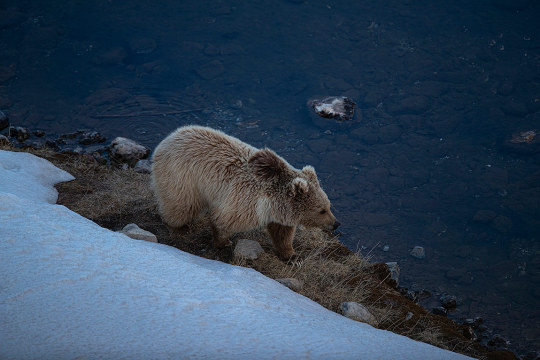
Himalayan Brown Bear, Kargil, India
By Sudipta Chakraborty
#sudipta chakraborty#photographer#himalayan brown bear#bear#animal#mammal#wildlife#kargil#india#nature
25 notes
·
View notes
Text
#dungeon meshi#dunmeshi#dunmeshi au#delicious in dungeon#dungeon meshi au#dunmeshi biosciences au#zoology
43 notes
·
View notes
Text
yes u do

i love to save bear images. do u want to see a bear image
#shes in there!!!#her name is kristina and she is a blonde himalayan brown bear at a ukranian bear sanctuary :^)#bears
93 notes
·
View notes
Note
Now do the spirit animals for all your other ocs
Monica: Siberian Tiger
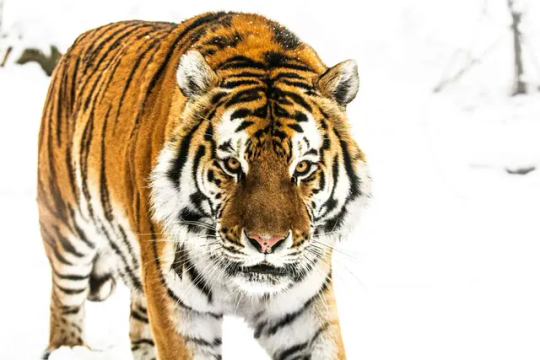
Seraphina: Sumatran Tiger

Vincent- Honey Badger

Amon- Kodiak Bear

Nathaniel- Australian Giant Cuttlefish

Sonia- Red Fox

Eric- Spotted Hyena

Magnus: Thoroughbred Horse

Strohl: Barbary Lion
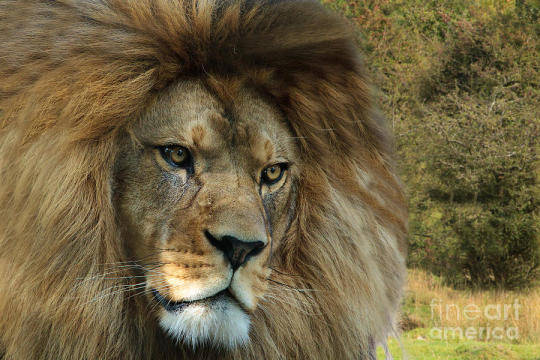
Katya: Savannah Cat
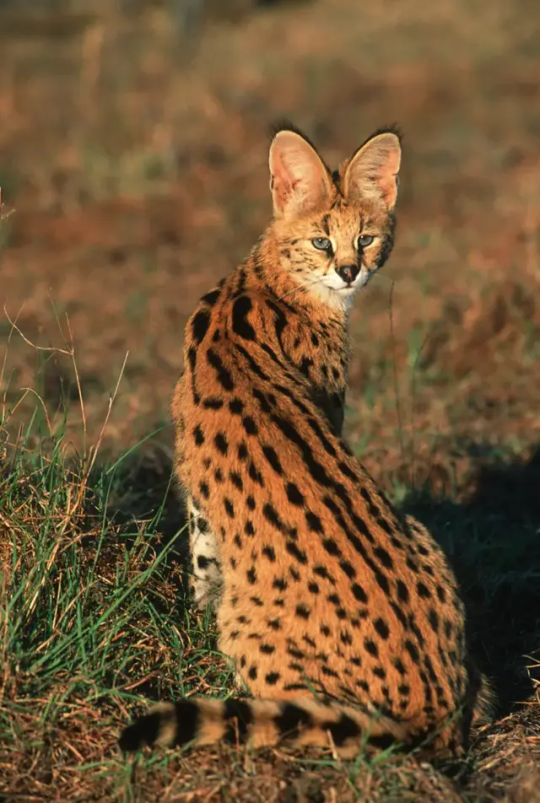
Aura: Glass Octopus

Verra: Giant Panda

Han: Himalayan Cat
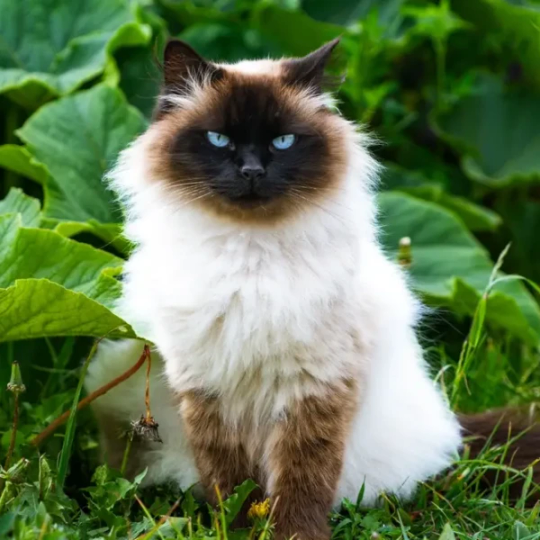
Titan- Hippopotamus
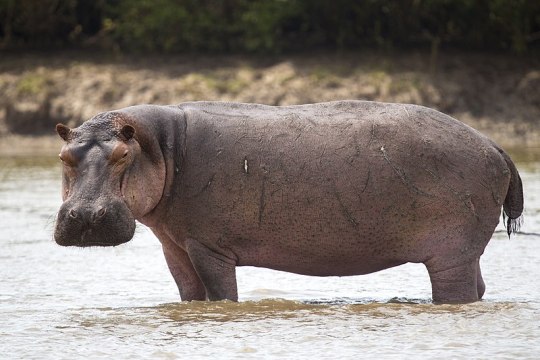
Karin- Spider tailed Horned Viper
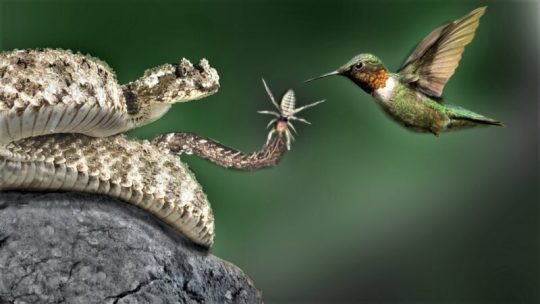
Samuel- Red Wolf

This is all based off of their respective traits and behavior in reference to the animal, not so much power scale.
Very brief explanation under the cut!
Monica: She's huge. She's powerful. She's a force of nature! It makes sense that her spirit animal would be a tank like the siberian tiger. They're the largest tiger species and even freak out smaller tigers.
Seraphina: She learned from the best! While not as large or strong as her mother was, she is still a force to behold. Sera is incredibly fierce, determined, and brave, which fits the animal. I also find them to look a lot more whiskery and cute so...
Vincent: How do you survive in a world where everything is bigger, stronger, and lethal? be loud! be angry! be aggressive! DESTROY. If you scream it out enough, they'll believe you. Not even lions mess with a pissed Honey Badger. They are also immune to snake venom out of pure tolerance. Metal.
Amon: Large and fluffy but still incredibly deadly, Amon sticks to his guns and goes about his life... While taking no shit in the process. He's also the beefiest and has the best hair. Kodiak bears are the biggest species of brown bear!
Nathaniel: Never underestimate the Cuttlefish. It has so many cards up its tentacles! including camouflage, great intelligence, hypnotism, and also perception of different light wavelengths. They're kind of jacks of all trades. I also find their huge noggins funny. Lol, Nate's big head.
Sonia: She's a yapper, she's playful, and she's a bouncy, kind of flighty person overall. Sonia is also known for her very... Foxy personality. It makes sense that part of her persona uses a Vixen! I also think the red suits her hair.
Eric: He's also a yapper. He loves to laugh, even when it's not appropriate! Life needs more fun. Eric is social, dynamic, and works well in a team. Hyenas are also known to be pretty intelligent and affectionate... At least among themselves.
Magnus: He's the créme de la créme. Millions upon millions of dollars and a sacrifice made by the head of operations behind VENUS was poured into his making. He is no clone. Nay, he is a prince, and the world is his inheritance. Thoroughbreds are the most expensive, high-end breeds out there. One of them, Fusaichi Pegasus, was sold for $70 million.
Strohl: Barbary Lions were hunted to near extinction, and now exist today in private collections, often to royalty and their sanctuaries. They're a gorgeous breed, with thicker, beautiful manes and intense eyes. It's odd, to think something so powerful exists in captivity. It is safe, living a rich life... But it is still a slave.
Katya: Savannah cats are a breed between domestic cats and african Servals. While many consider them to be higher range pets with beautiful pelts and an exotic size, they're still just as wild and tempermental as their ancestry allows... Some people find this out a bit too late.
Aura: Glass Octopids are a rather mysterious lot. They pretty rare and hard to spot in the oceans they're from! It's to the point that they can be found anywhere in their subtropical habitats, with few known habits and behaviors. They're also bioluminescent <3
Verra: She might be able to call upon the beasts she finds in her dreams, but regular, human Verra is pretty soft hearted. She doesn't care for conflict and prefers to live a easier life without stress. Sera worries sometimes about her lack of self preservation, though...
Han: She's partially bred with chimeric DNA, sourced and spliced from cats and beastshifters. She's got a very feline temperament because of it. She is also quite fluffy! She rivals huskies in shed yields.
Titan: Extremely, extremely aggressive, territorial, and deadly. Hippos kill 500 people a year. Lions kill 22. A hippo can bite you in half just for being in the general proximity of their river. Not even a crocodile does that. Hippos are essentially muscle tanks of mass death and terror, and they can also run up to 28 mph. So.
Karin: This bird-eating snake lures them in using their peculiar tails. The tails crawl and move around like spiders do when dragged on rocks, and the snake knows exactly how to make it seem like a juicy, perfect treat for the birds. Once the bird flies close enough, the snake bites it with several shots of venom and enjoys its meal. A fitting animal for a recruiter.
Samuel: Wolves are strong alone and stronger together, and their ability to fight for a united cause reflects Samuel quite well. He is ambitious but also focused and dedicated to his mission, doing his best to make sure his team pulls through... Even when he lives in a world that is full of threats.
#devarambles#nathanieltag#vincenttag#soniasanderstag#seraphinatag#amontag#rickytag#doctorstrohltag#katyatag#samueltag#verratag#monica hayes herrera#karineristag#i think that’s all the tags#no amon wouldnt have a reptile for a spirit animal#his personality is different he has a lot more warmth to his character#too hot blooded. lol.#ark_systema#A_S Textposts
11 notes
·
View notes
Text
The Yeti - WK9
These are a few features of the Yeti, which is a legendary beast often called the “Abominable Snowman” is that’s a large ape like creature believed to live in the Himalayan mountain of Asia. The Yeti is described in different ways but is usually postured as a big, upright, walking assimilation with white or gray, shaggy fleece all over its body, height ranging between six to ten feet. Men have also dreamt the Yeti many times in pop culture. An example can be traced back to the monster’s world in the animated film “Monsters, Inc.” among them the character of the Abominable Snowman voiced by John Ratzenberger, who is friendly monster who lives in the Himalayas. Another example is the Yeti's inclusion in the video game "Uncharted 2: map in ‘Among Thieves,’ where the creature is found within the snowy ranges of Nepal. Regarding analysis some proponets claim that the legend of Yeti may be rooted in real animals that may be spotted in the Himalayas including the Himalayan brown bear or the Tibetan blue bear might be mistaken for this huge ape-like creature amid the snowy gauntlet. Some have estimated that it may just be a cultural belief that has been handed down from one generation to the other maybe as a story to warn people about the harm of the mountains. Whether the legend of the Yeti is true or false people are still discussing it. Despite numerous sighting, including some less skeptical accounts, and even foot prints none have effectively provided clear evidence for the existence of the Yeti. But, if you asked me I'm sure there's something out there.

5 notes
·
View notes
Text
🏞️ Discover Deosai – The Land of Giants
🏞️ Discover Deosai – The Land of Giants Deosai National Park, often referred to as the “Land of Giants,” is a breathtaking high-altitude plateau in Pakistan. Located in the Skardu region, this majestic park offers vast rolling plains surrounded by towering snow-capped mountains, pristine lakes, and a diverse range of wildlife. Deosai’s untouched beauty and serene environment make it a must-visit…
#adventure in Deosai#adventure travel Pakistan#best time to visit Deosai#camping in Deosai National Park#camping spots in Deosai#Deosai camping#Deosai meadows#Deosai National Park#Deosai plains#Deosai plateau#Deosai plateau tours#Deosai road trip#Deosai tourism#Deosai travel guide#Deosai trekking#Deosai wildlife#explore Deosai#explore Sheosar Lake#Gilgit-Baltistan parks#Gilgit-Baltistan tourism#high-altitude adventure#Himalayan Brown Bear#Land of Giants#natural beauty Deosai#Nature Exploration#outdoor activities Pakistan#outdoor adventure Pakistan#Pakistan national parks#Pakistan&039;s natural wonders#photography in Deosai
0 notes